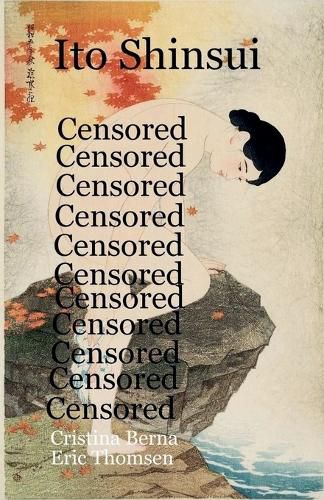Readings Newsletter
Become a Readings Member to make your shopping experience even easier.
Sign in or sign up for free!
You’re not far away from qualifying for FREE standard shipping within Australia
You’ve qualified for FREE standard shipping within Australia
The cart is loading…






This title is printed to order. This book may have been self-published. If so, we cannot guarantee the quality of the content. In the main most books will have gone through the editing process however some may not. We therefore suggest that you be aware of this before ordering this book. If in doubt check either the author or publisher’s details as we are unable to accept any returns unless they are faulty. Please contact us if you have any questions.
This version of the title is censored on the demands of self-publishing platform BOD.es in Spain, which is a subsidiary of the German self-publishing platform BOD.de. Formally the demands are for covering up nipples on old Japanese prints. There is no improper content. The authors believe that the real reason however, is politically motivated, because it was a condition of publishing and not a result of the identification of any special audience opportunity.
However, there may just be such an audience, which this issue of the title will then accomodate.
Shinsui Ito was born 4 February 1898 in the Fukagawa district of Tokyo and died 8 May 1972.
Shinsui Ito was his pseudonym.
Shinsui designed mostly bijin-ga and only more occasionally landscape prints, see Shinsui Ito Landscapes by authors. Bijin-ga is "pretty ladies", akin to pin-up art.
Bijin-ga (???, ????, "beautiful person picture") is a generic term for pictures of beautiful women (bijin) in Japanese art, especially in woodblock printing of the ukiyo-e genre.
At the age of ten, young Hajime found employment at the Tokyo Printing Company after his father?s business went bankrupt, and here he began to show serious interest and talent in Nihonga, Japanese-style painting.
In 1911 he was introduced to Kaburagi Kiyokata, a renowned painter, and became Kiyokata's student. It was Kiyokata that gave Hajime his artist's name, Shinsui. When Shinsui was eighteen years old, his paintings were seen by the publisher Watanabe Shozaburo at an exhibition at Kiyokata's art school.
Ukiyo-e itself is a genre of woodblock prints and paintings that was produced in Japan from the 17th century to the 19th century. The prints were very popular amongst the Japanese merchants and the middle class of the time.
$9.00 standard shipping within Australia
FREE standard shipping within Australia for orders over $100.00
Express & International shipping calculated at checkout
This title is printed to order. This book may have been self-published. If so, we cannot guarantee the quality of the content. In the main most books will have gone through the editing process however some may not. We therefore suggest that you be aware of this before ordering this book. If in doubt check either the author or publisher’s details as we are unable to accept any returns unless they are faulty. Please contact us if you have any questions.
This version of the title is censored on the demands of self-publishing platform BOD.es in Spain, which is a subsidiary of the German self-publishing platform BOD.de. Formally the demands are for covering up nipples on old Japanese prints. There is no improper content. The authors believe that the real reason however, is politically motivated, because it was a condition of publishing and not a result of the identification of any special audience opportunity.
However, there may just be such an audience, which this issue of the title will then accomodate.
Shinsui Ito was born 4 February 1898 in the Fukagawa district of Tokyo and died 8 May 1972.
Shinsui Ito was his pseudonym.
Shinsui designed mostly bijin-ga and only more occasionally landscape prints, see Shinsui Ito Landscapes by authors. Bijin-ga is "pretty ladies", akin to pin-up art.
Bijin-ga (???, ????, "beautiful person picture") is a generic term for pictures of beautiful women (bijin) in Japanese art, especially in woodblock printing of the ukiyo-e genre.
At the age of ten, young Hajime found employment at the Tokyo Printing Company after his father?s business went bankrupt, and here he began to show serious interest and talent in Nihonga, Japanese-style painting.
In 1911 he was introduced to Kaburagi Kiyokata, a renowned painter, and became Kiyokata's student. It was Kiyokata that gave Hajime his artist's name, Shinsui. When Shinsui was eighteen years old, his paintings were seen by the publisher Watanabe Shozaburo at an exhibition at Kiyokata's art school.
Ukiyo-e itself is a genre of woodblock prints and paintings that was produced in Japan from the 17th century to the 19th century. The prints were very popular amongst the Japanese merchants and the middle class of the time.